My Piano Learning Journey Has Come To An End..
This semester flew by–and so did my piano learning project. As part of my EDTC 300 course, I was tasked with choosing a skill to learn using online tools and documenting my journey through weekly blog posts.
For my learning journey, I decided to learn how to play the piano–a goal I’ve always had in the back of my mind, but never really fully committed to. My piano keyboard was sitting in the back of my closet collecting dust, and I thought it was the perfect time to put it to use. I had zero formal training, and while I knew a few basic notes, such as the Major C in the center of the keyboard. I started from scratch when it came to technique, rhythm, and music coordination. I also wanted to explore how accessible learning a new musical instrument could be using digital resources–no private lessons, no books, just me, the keyboard, and the internet.
So how did my piano learning journey go? Was it everything I thought it would be? Not exactly. Was it full of trial, error, restarts, and stumps? Definitely. Some weeks felt incredibly rewarding, with awesome various resources, and others made me want to throw my keyboard away. As I could find little to no resources to some, and they were significantly challenging to learn. But through it all, I saw real progress. I learned a ton about persistence, and discovered just how powerful online learning can be.
Here’s a quick recap of my piano learning journey:
- Week 1: Introduction to my Piano Learning Journey!
- I introduced my learning project of choosing to learn the piano.
- My love for piano began as a child, inspired by watching my neighbour play a beautiful old piano filled with history and music.
- Now, as a future teacher, I’m using this learning project to reconnect with that passion and explore how music can support well-being and creativity in the classroom.
- My goal is to learn the basics and play a simple song by the end of the semester, starting with apps like Simply Piano and Skoove and sharing my progress along the way.
- Week 2: Meeting the Keys!
- This week, I focused on the piano fundamentals: identifying white key names, finding Middle C, learning finger positions, and trying out a simple 4-note rhythm.
- I used Flowkey to improve posture and hand placement, and Simply Piano to begin reading notes and even play my first beginner song, Say Something.
- Week 3: Cracking the Code!
- Focused on reading notes on the grand staff, including treble and bass clef, and identifying Middle C as my starting point.
- Used Pianote to learn the basics of reading lines, spaces, and ledger lines, with helpful memory tricks like “Every Good Boy Deserves Fudge” and “FACE.”
- Practiced with NoteVision, an interactive app that gave real-time feedback and helped me match staff notes to the correct piano keys.
- This week made reading music feel less overwhelming and gave me a strong foundation to build on for future songs!
- Week 4: Counting the Beat
- Focused on learning note values (whole, half, quarter, eighth, sixteenth) and how long to hold each when playing, using the Music4Kids YouTube channel.
- Practiced identifying note parts (head, stem, flag) and how they relate to beat counts in 4/4 time signature.
- Used Pinterest to find beginner sheet music (Mary Had a Little Lamb) and practiced drawing each note on a music staff.
- Gained a deeper understanding of rhythm as the heartbeat of music, and started connecting note shapes to sound duration—next week’s goal: time signatures + clapping with a metronome!
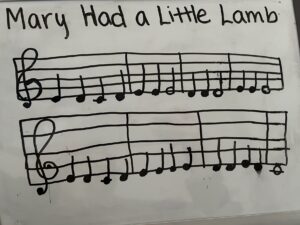
- Week 5: Clap. Count. Play.
- Learned how to read time signatures (like 4/4, 3/4, 6/8) using “Crack the Code” and practiced clapping them out using metronome tools and the “Rhythm Clap Along” YouTube video.
- Discovered how time signatures affect the feel of music (e.g., 3/4 for waltzes, 6/8 for jigs, 5/4 for jazz), making rhythm more understandable and musical,
- Practiced clapping rhythms with an online metronome, starting with quarter notes and building to eighth notes—challenging but helped me internalize steady beats.
- Gained confidence by feeling rhythm in my body, not just counting, and found rhythm clapping to be a powerful step before playing actual music!
- Week 6: Unlocking my Inner Jukebox
- Focused on pitch recognition through daily ear training using beginner-friendly apps and YouTube games (C&G, C&E) to match notes like C, E, and G by sound.
- Practiced identifying chords by ear using a virtual keyboard and my own piano for reference—challenging but rewarding with daily 10–15 minute sessions.
- Learned that ear training builds gradually through repetition and failure, helping me begin to “feel” notes rather than just memorize them.
- Found kid-friendly tools especially helpful and accessible, though noted a lack of strong digital ear training resources, making this one of my toughest weeks yet.
- Week 7: My Piano Journey has come to an end..
- I wanted to end this project with a piece that meant something to me. I chose “Hallelujah” by Leonard Cohen—a song that has always made me feel something deep and indescribable. Learning it felt like a full-circle moment. It challenged me with its pace, arpeggios, and transitions, but also reminded me why music is so powerful.
- Summing up my Learning Journey
Here’s the final video of me playing Hallelujah
(Played off the sheet music from musescore and Youtube channel Betacustic)
Reflections on Learning Online
What did learning online make possible?
- Unlimited Access to Resources Anytime, Anywhere
-
- Learning online gave me countless 24/7 access to tutorials, interactive tools, and beginner sheet music. Whether I was practicing at home, watching videos on the go, or reading articles on study breaks, I always found something new to support my online learning. At times, it was challenging to find the correct resources that worked best for me. In the end, I found my way through resources I had.

2. Learning from random experts
-
- YouTube teachers like Piano Lessons on Pianote made complicated ideas feel simple and engaging. Their step-by-step tutorials and visual tools helped me understand everything from hand positioning to note values to playing full songs. It felt like having a personal teacher in my room.
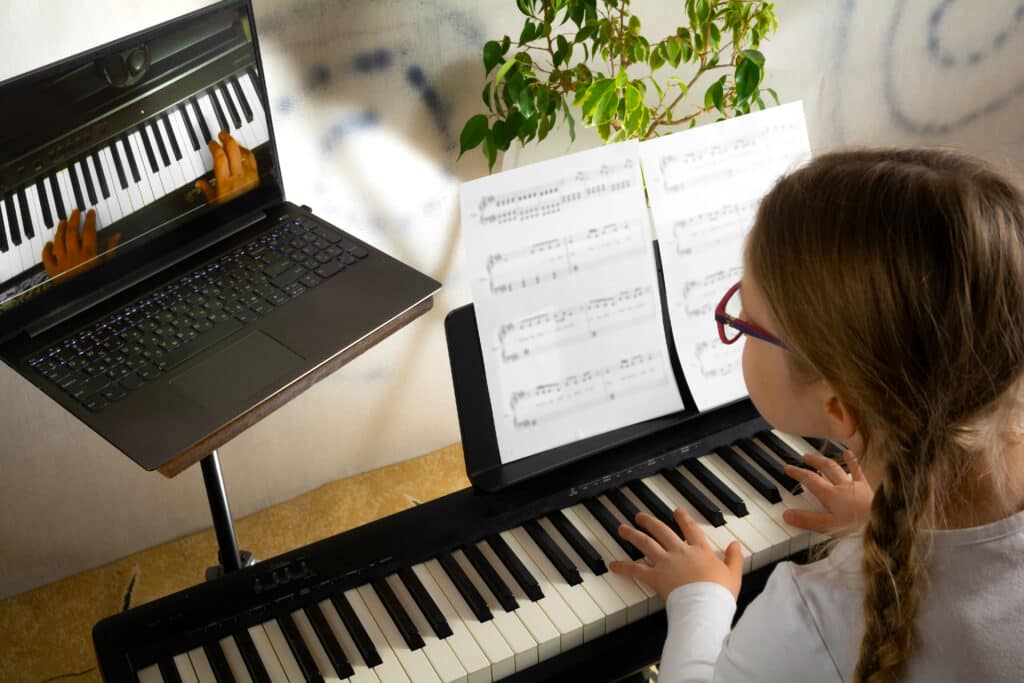
3. Control over my own Pace
-
- One of the biggest benefits was the ability to pause, rewind, or rewatch lessons as often as I needed. If I missed something or felt confused, I didn’t have to wait for help—I could replay that section until it clicked. This flexibility made learning less stressful and more supportive of my pace. Especially when it came to the pace of when I learned and when I felt like it was time to move on. In normal classes with a teacher, I wouldn’t have the chance to learn lessons on my own time and practice over and over again until I learned the next lesson. It helped my anxiety tremendously.
4. Opportunities to Share, Reflect, and Connect
-
-
Documenting my progress weekly allowed me to reflect on what I was learning and where I was growing. Sharing videos, reflections, and challenges through blog posts connected me to others and gave me encouraging feedback that helped keep me going. It felt like being part of a learning community.
-
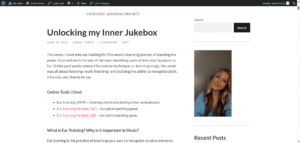
What was difficult about learning online?
- Lack of Real-Time Feedback
-
- Without a live teacher watching me play, it was easy to miss mistakes—especially with posture, hand position, or subtle rhythm errors. Sometimes I didn’t even realize I was doing something wrong until I rewatched my own videos or stumbled in a lesson later on.
- I did have my peers feedback to reflect on my learning journey. However, not all of my posts got commented on. If they did, it was never in the moment. Typically almost a week later. It was up to me to decide if my mistakes were caught or if I was even doing something particular correct.
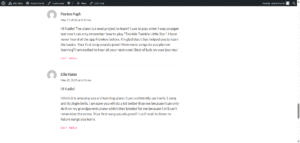
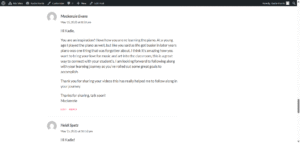
2. Lack of Structure and Direction
-
- With so many resources available, it was sometimes overwhelming to know what to focus on next. I had to build my own learning path, which meant constantly deciding what I should be practicing, what skill to build, or when to move on. That flexibility was great—but also a challenge.
3. Balancing Practice with Documentation
-
- I noticed that a significant amount of time went into preparing my blog posts—writing reflections, recording videos, organizing thoughts, and editing content. While this was meaningful and helped me learn, it sometimes cut into the time I could have spent actually practicing on the piano.
Final Thoughts
This project stretched me in unexpected ways. I thought I’d just be learning a few notes and calling it a day, but I ended up developing a whole new appreciation for what it takes to stick with something hard, especially when no one is making you do it.
One of my biggest takeaways? The importance of celebrating progress over perfection. There were moments where I was frustrated, slow, and full of self-doubt. But there were also breakthroughs, joy, and a sense of peace in seeing improvement over time.
When I have my own classroom, I want to give students the space to try, struggle, reflect, and grow—just like I did through this project. I’ll definitely be encouraging them to try learning something online, document their process, and be proud of how far they come.
Thank you to everyone who followed along on this journey. Now, if you’ll excuse me, I’ve got a few more songs to learn…

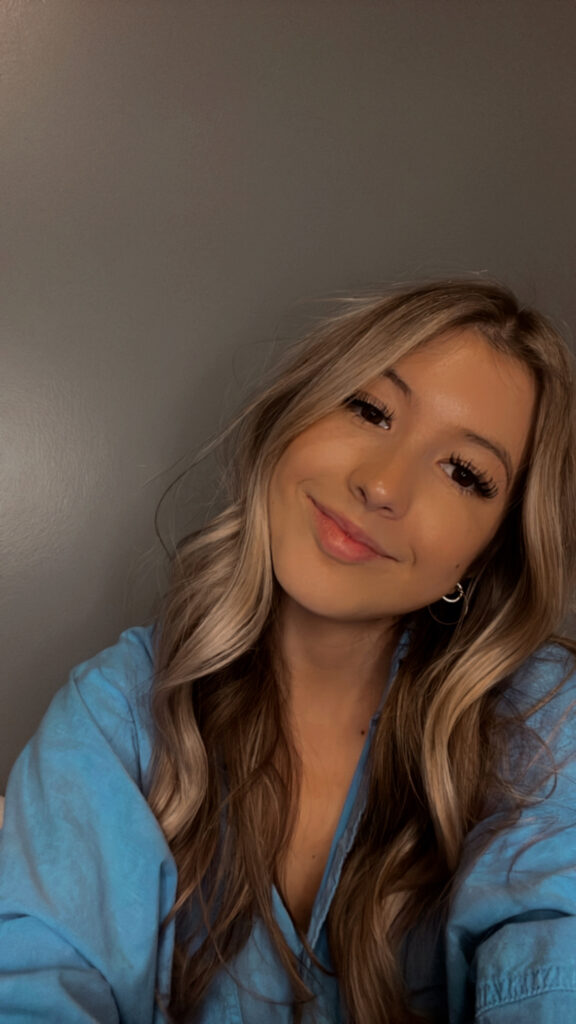
Leave a Reply